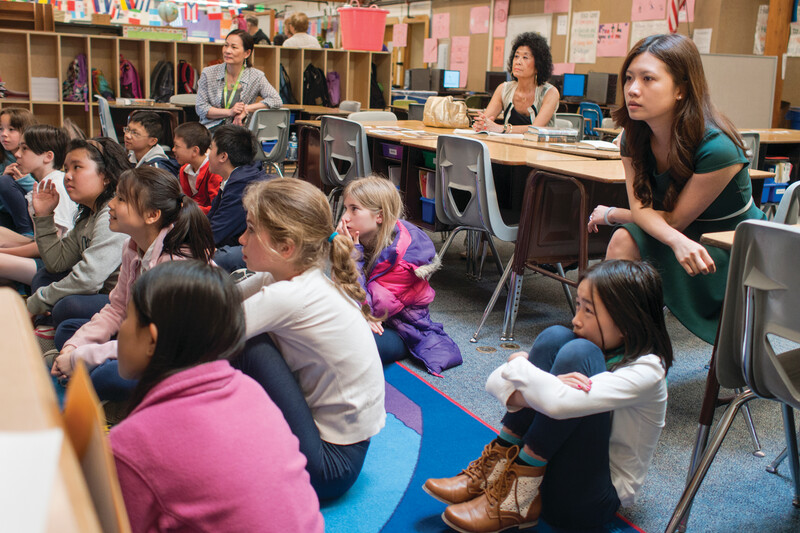Instructional rounds are one of the most valuable tools that a school or district can use to enhance teachers' pedagogical skills and develop a culture of collaboration. The goal of instructional rounds isn't to provide feedback to the teacher being observed, although this is an option if the observed teacher so desires. Rather, the primary purpose is for observing teachers to compare their own instructional practices with those of the teachers they observe. The chief benefit of this approach resides in the discussion that takes place among observing teachers at the end of the observation as well as in subsequent self-reflection.
Getting Started
Every teacher should participate in instructional rounds at least once a semester. Rounds should be facilitated by a lead teacher— someone colleagues respect as an exceptional teacher and recognize as a professional. Instructional coaches commonly have these characteristics. Administrators may also lead rounds, but it's important to clarify from the outset that the purpose is not to evaluate the teachers being observed.
The observed teachers typically have either volunteered or been asked to be the subject of rounds. Ideally, selected teachers are drawn from the pool of master teachers in a building or district—those veterans with proven ability to enhance the achievement of all students in their classes. This noted, any teacher might offer his or her classroom as a venue for rounds.
Conducting Rounds
Groups conducting rounds are best kept small—from three to five teachers, not counting the lead teacher. On the scheduled observation day, teachers being observed should alert their students that several teachers will visit their classroom. They might explain that the teachers are trying to learn from one another, just as students do.
When the observing teachers arrive, they should knock at the door and then quietly move to the back of the classroom, to some spot that doesn't disrupt the flow of instruction. There they observe and take notes regarding the teacher's use of specific instructional strategies. On an individual level, teachers can watch for strategies of particular interest to them, such as how the teacher uses questioning strategies or graphic organizers. Or the observation may have a common focus. For example, for one set of rounds, a school or district might decide that everyone will examine how a teacher communicates instructional objectives to students and keeps these objectives in the forefront of students' minds throughout the lesson.
With focus areas identified, observing teachers record what they see during the 10 to 15 minutes that a round typically lasts. Observing teachers do not score teachers on a rubric. Rather, they take notes on teacher behaviors that relate to the observation focus areas. At the end of the observation, the observing team exits the classroom, making sure to thank the teacher and students.
Debriefing Rounds
After each instructional round, members of the observing team convene to reflect on their experiences. They can do this in round-robin format, with each teacher commenting on what he or she noted.
- Observers should not share what they have observed in a lesson with anyone outside the group of observers.
- Observers should not share comments made during the debriefing with people outside the debriefing.
- Observers should not offer suggestions to observed teachers unless the observed teachers explicitly ask for feedback.
As observing teachers take turns commenting, it's helpful to use a "pluses" and "deltas" format. An observing teacher begins by noting the positive things (pluses) that he or she saw and then speculates as to what produced the positive outcome. For example, the observing teacher might postulate that the classroom appeared well-managed because the students were aware of specific routines they were to use, such as raising their hands when asking a question and quietly transitioning from one activity to another. The observing teacher might suggest that students seemed highly engaged because the teacher maintained a lively pace and used quite a bit of humor.
Next, the observer mentions some questions or concerns (deltas) that he or she has about the observed teacher's use of strategies. For example, he or she may wonder why the observed teacher stayed in front of the class the entire period instead of moving around the classroom. At this point, other observing teachers might add their thoughts, sharing their pluses and deltas. For any given observation, an observing teacher can opt not to share his or her analysis with the group.
What Teachers Can Learn
Instructional rounds end with observing teachers identifying instructional practices they'll continue to use because they saw other teachers employing them effectively, practices they currently use that they will now reexamine in light of what they observed, and practices they don't currently use but will try because they saw other teachers use them well.
For example, an observer teacher might offer the following thoughts:As a result of what I saw today, I'm going to continue calling on students randomly when I ask questions. Other teachers seem to have success with this strategy as well. However, I'm going to reconsider the types of questions I ask. I think I focus too much on recall questions and don't challenge students enough. Finally, I've got some new ideas about routines I need to implement with my students.
Revitalized!
I've found that instructional rounds stimulate excitement and energy among faculty members almost immediately. When teachers have an opportunity to observe and interact with their colleagues in a nonevaluative way regarding instruction, everyone wins.



